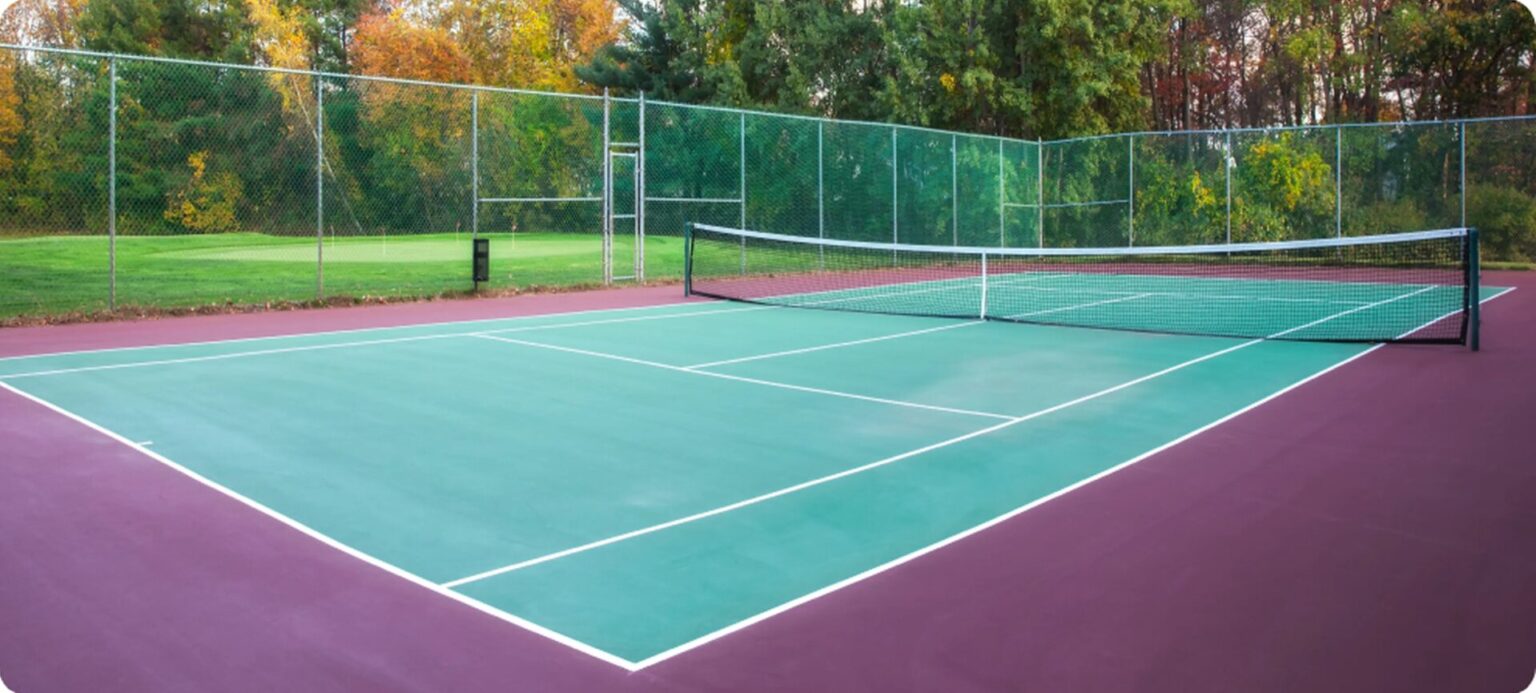Understanding the official measurements for a tennis court is crucial for players, coaches, and fans alike. This knowledge forms the foundation of strategy, fair play, and a true appreciation for the sport’s geometric complexity. Whether you’re analyzing a professional match or planning to build your own court, knowing these dimensions inside and out will deepen your connection to the game.
The International Tennis Federation (ITF) is the global governing body that strictly defines the standard measurements for a tennis court. These regulations ensure that every certified court, from Wimbledon to your local park, provides a consistent and fair playing field. Adherence to these specs guarantees that the game’s fundamentals remain unchanged, no matter where in the world it is played.
The Blueprint: Breaking Down the Overall Court Dimensions
The primary measurements for a tennis court define it as a rectangle 78 feet (23.77 meters) in length. For singles play, the court is 27 feet (8.23 meters) wide, creating a total playing area of 2,106 square feet. These dimensions create the main battlefield for singles matches, where every inch is used for strategic shot placement and relentless lateral movement during rallies.
However, the measurements for a tennis court expand for doubles matches. The width increases to 36 feet (10.97 meters) by including the two 4.5-foot (1.37-meter) wide doubles alleys on either side. This broader playing area, totaling 2,808 square feet, accommodates four players and encourages different tactics, including more net play and angled shots that utilize the full width of the court.
The Service Box: Where Every Point Begins
The service box is one of the most critical areas defined by the measurements for a tennis court. Each side of the net features two service boxes, each 21 feet (6.4 meters) from the net and 13.5 feet (4.115 meters) wide. A legal serve must land diagonally within this box, making its precise dimensions fundamental to starting every point correctly.
These specific measurements for a tennis court service area create a challenging target for servers. The depth and width demand precision, rewarding powerful and well-placed serves while punishing inaccuracy with faults. The strategic importance of this box influences serving tactics, from targeting the “T” to whipping wide serves that pull the receiver off the court.
The Net and Posts: Dividing the Battlefield
The net is a central component, and its specifications are a key part of the official measurements for a tennis court. It stretches across the entire width of the court, standing 3 feet (0.914 meters) high at the center. This height forces players to generate enough lift to clear the net while keeping the ball within the court’s length, a fundamental challenge of the sport.
Interestingly, the measurements for a tennis court dictate that the net posts are positioned 3 feet (0.914 meters) outside the doubles sideline, making them 42 feet apart. The net itself is anchored to these posts at a height of 3.5 feet (1.07 meters), creating a slight dip in the middle. This specific height at the posts prevents an unrealistic angle for cross-court passing shots.
Lines and Markings: Reading the Court’s Language
Every line on the surface communicates the official measurements for a tennis court. The baseline marks the rear boundary, while the sidelines change between singles and doubles play. All lines are typically 2 inches (5 cm) wide, and a ball touching any part of the line is considered “in.” This uniformity is essential for making consistent in/out calls.
The measurements for a tennis court also include the “No Man’s Land,” the area between the service line and the baseline. While not marked by its own lines, its existence is defined by the other dimensions. Coaches often drill players to avoid this zone during rallies because it leaves a player vulnerable to both deep shots and short angles.
Why Precision Matters: The Impact of Accurate Measurements
For players, internalizing the exact measurements for a tennis court is a strategic necessity. Knowing the distance to the baseline or the width of the alley informs shot selection, from defensive lobs to aggressive angles. This spatial awareness allows players to maximize their efficiency and coverage, turning the court’s geometry into a weapon.
For construction, adhering to the regulated measurements for a tennis court is non-negotiable for a professional result. Whether installing a hard, clay, or grass court, the foundation, sub-base, and final surfacing must all conform to ITF standards. This ensures not only fair play but also proper drainage, ball bounce, and the overall longevity and quality of the playing surface.
From Knowledge to Reality: Building Your Regulation Court
Armed with knowledge of the official measurements for a tennis court, you can confidently embark on a construction project. The first step is to secure a plot of land that accommodates not only the court itself but also ample surrounding space for fencing, lighting, and player movement. Proper planning at this stage is critical for a successful build.
Working with a professional court builder, like Dream Courts, ensures that every ITF specification is met. They will translate the blueprint measurements for a tennis court into a reality, addressing critical factors like orientation (north-south is ideal), sub-base construction, and surfacing material. By trusting the experts, you guarantee a court that is perfect for both recreational enjoyment and competitive match play.


